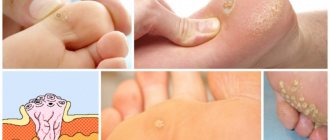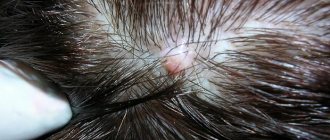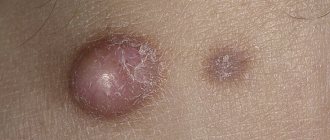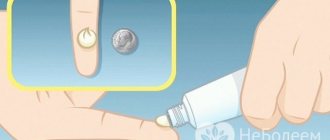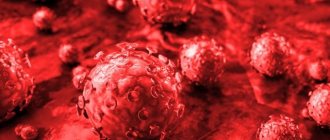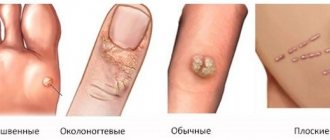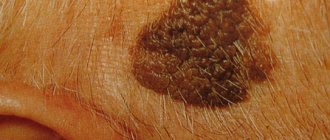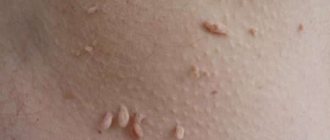What is a callus
A wart is a small growth that is hard to the touch and can appear on the skin and mucous membranes.
In most cases, this is a benign neoplasm, the appearance of which is provoked by the human papillomavirus. There are about a hundred of its varieties. Scientists have studied them well and identified three groups of strains to determine the risks of infection.
The first includes those that have low risks of oncogenicity, the second – medium, and the third – high. The virus does not activate immediately when it enters the human body.
First, it experiences an incubation period, and then falls into a latent form and waits in the wings. Warts appear when immunity decreases.
A callus is a growth, a dry area of skin that has a compacted structure. Appears as a result of prolonged friction or strong pressure on the same point.
The reason for the formation of such conditions is wearing tight, uncomfortable shoes, lack of ventilation of the feet, and excessive sweating. Such a callus may appear on the hand due to monotonous work.
You can often see calluses on the fingers of people who write with a pen or pencil. The callus always has clear contours and a rounded shape.
Plantar calluses appear mainly due to a certain area of skin constantly rubbing against something or putting pressure on it. Calluses are divided into two groups:
- Dry callus is dead epithelial cells.
- A wet callus is a bubble with lymph inside.
The most common benign tumors on human skin at the moment are warts. They can be located on absolutely any area of the skin. Sometimes they can form groups. Becoming one big wart.
This skin defect appears due to infection with the papilloma virus. They cause hypertrophy of the skin papillae. In addition, this means that formations can be transmitted by contact. You can also become infected with papilloma by visiting a public swimming pool. To date, scientists have discovered about sixty types of the virus that causes warts.
They can be divided into several groups:
- verruca vulgaris (common) - it can be found mainly only on the hands
- verruca plana juvenilis (flat juvenile) - they look like hemispheres that rise above the skin;
- verruca plantaris (foot) – often confused with calluses;
- verruca acuminata (venereal) – This type of wart is most often found in warm, moist areas of the genitals. The reason for its appearance is sexual intercourse with an infected partner or simply failure to comply with the simplest rules of hygiene. They appear within two to five months.
More than half of the total number of warts that appear on the human body belong to the first group of verruca vulgaris. Most often, the victims of this disease are children and adolescents from 7 to 15 years old.
They look like dense hemispherical nodules of a grayish-white color. If you do not pay attention to them and do not treat them, the warts will soon become covered with growths in the form of papillae, and brown or white spots will appear around them.
The next most common are warts on the soles of the feet. They are mainly seen in people whose feet sweat a lot. If a plantar sore is left untreated and ignored, it will become painful over time. And the consequences can be even worse, since the sore grows to the size of a chicken egg. At the same time, it is almost impossible to walk and there is a real chance of complications.
The third place in frequency of occurrence is occupied by a flat wart. It is registered in only 4% of cases, often in adolescents.
Therefore, the second name for such formations is “youthful”. They have chosen places for themselves on the backs of the hands and fingers, next to the nails.
They appear most often due to the fact that a certain area of human skin has been subjected to strong mechanical stress. The yellow flat subspecies differs from its “relatives” in that over time it becomes covered with a hard horny covering.
To prevent the appearance of warts, first of all, you need to follow basic hygiene rules, wear comfortable shoes and get rid of bad habits. In addition, stress can cause warts to appear.
Therefore, in our time, when the world demands more and faster from every person, it is very important to be able to rest properly. You can get rid of warts using both folk remedies and medication.
It is important to take into account that when using medical products (caustic acids and alkalis), you need to drip liquid only onto the wart, otherwise you can introduce an infection into the body and damage adjacent tissues.
There are a lot of traditional methods for treating warts. But one of the simplest is treatment with ash: You need to take matches and break off their heads. After this, the wooden sticks must be completely burned and ground. The resulting coal powder is diluted with water to a homogeneous thick mixture. After this, the resulting slurry should be applied to the skin lesion and the area of skin should be sealed with an adhesive plaster.
This procedure must be repeated for several days. Eventually, the wart will begin to shrink and dry out, and then fall off.
Layers of keratinized epithelial cells on the feet occur in the form of calluses and corns. Their difference is that the first ones are rather subcutaneous formations, since most of them go deep. The latter are superficial thickening. More often, calluses are formed as a result of mechanical damage to the feet - prolonged pressure, friction.
Tight, poorly ventilated, hard shoes cause profuse sweating, as a result of which the softened skin on the toe, between the toes, on the heel, and side ribs rubs. High heels transfer body weight only to the forefoot; shoes with flat soles provoke lowering of the arch, which leads to thickening of the skin in these places.
Psychosomatics
In addition to the common factors that provoke the appearance of warts on the sole, there are also psychological causes of the disease - psychosomatics. Not long ago, scientists began to conduct a thorough study of the statistics of patients with HPV, and in the process of research they learned that for each person the period between infection with the virus and the appearance of the first symptoms lasts differently.
There have also been cases in medical practice where warts appeared in the same place where a papilloma had recently been surgically removed. All this is explained by the fact that the appearance of growths depends on the psychological state of the patient. That is, the disease may not manifest itself for a long time, but due to a little stress or anxiety, the person is literally covered with papillomas of various sizes.
Such changes in the body occur when the patient is subjected to strong emotional experiences and his psyche is under prolonged stress. This provokes a disruption of the body’s protective functions, which inhibit the activation of the papillomavirus.
Because of such problems, it is not possible to cure HPV, because the psychosomatic cause of the disease cannot be treated with conventional antiviral drugs. First, a person needs to restore his psychological balance and a psychologist can help with this. Only after getting rid of stressful situations can the papillomavirus be completely cured.
Must read Elimination of papillomas using the Neumyvakin method
Causes of calluses
Neoplasms most often occur on the feet or toes; sometimes the palms become infected. This is due to sweating of the feet, a weakened state of the body (the period during or after illness), the presence of wounds or cracks on the feet.
The virus can be “caught” anywhere: in public transport, when exchanging toys, during contact with an infected person, while playing in the sandbox or other places that involve running without shoes and threatening cuts or abrasions.
It is quite difficult to recognize papilloma and distinguish it from other skin growths. There are several types of tumors that affect the skin of the legs:
- plantar warts;
- genital warts;
- nevi;
- corns;
- core calluses;
- benign skin tumors;
- malignant neoplasms.
Plantar wart, or thorn
Callus warts on the skin appear when the human papillomavirus is activated. The color and shape of the growth can be any. There are simple, flat and filiform warts that are flesh-colored, pink or brown. The virus is transmitted by contact; a warm, humid environment is favorable for its existence. Therefore, people often become infected when visiting a bathhouse, swimming pool or sauna.
In a normal state of immunity, the virus remains in the body in an inactive state, and no symptoms of the disease appear.
HPV is transmitted from an infected person to a healthy person through the smallest violations of the integrity of the skin (scratches, cuts, wounds).
- Transmission of the virus is possible through sexual and household contact.
- The pathogen can be easily picked up in public places (swimming pool, sauna, beach).
- Transmission of the virus is possible through sexual and household contact.
- The pathogen can be easily picked up in public places (swimming pool, sauna, beach).
Warts on the skin do not appear immediately, but can begin to grow even several years after infection.
While in the human body, the virus, restrained by protective immune cells, sleeps.
Photo: violation of personal hygiene rules contributes to the spread of the virus
But as soon as the immune system weakens a little, the pathogen immediately begins to activate.
Weakening of the immune system occurs due to poor nutrition, various infectious or hormonal diseases, taking contraceptives, antibiotics, exposure to stress, excessive sweating of the hands and failure to comply with basic rules of personal hygiene.
HPV is transmitted from an infected person to a healthy person through the smallest violations of the integrity of the skin (scratches, cuts, wounds).
- Types of formations
- How to distinguish a callus from a wart?
- Treatment of calluses and warts
- Steaming foot bath
- Prevention of warts and calluses
A callus wart can cause a lot of trouble for a person: it causes pain, discomfort and interferes with walking. Therefore, all plantar formations require mandatory treatment.
Types of formations
There are the following types of plantar formations:
- corn;
- corns;
- plantar wart.
A callus also forms when pressure or friction is applied to the skin. But its difference is considered to be a small area of formation with clear rounded contours. Calluses can appear on both hands and feet. There are flat and cone-shaped calluses.
A corn is a compaction consisting of a layer of dead cells without a core. Corns are formed as a result of rubbing the foot with narrow shoes, when wearing heels, during physical impact and after walking barefoot on hard ground.
A plantar wart looks like a tuft of filiform papillae protruding above the surface of the skin, surrounded by horny layers. They are caused by the human papillomavirus and are transmitted through personal hygiene items, through skin injuries or when immunity is reduced.
How to distinguish a callus from a wart?
With constant friction or pressure on a certain area of the skin, intense necrosis of its surface layers occurs. At the same time, dead epidermal cells do not have time to exfoliate and be removed from the surface of the skin.
As a result, the dead epidermis layers and thickens to form a callus. When you sweat excessively, sweat softens dead skin and a soft callus forms.
Lymph can accumulate under the layer of thickened epidermis, which leads to the appearance of a water callus.
Diagnostics in laboratory conditions
Since it is not always possible to distinguish a wart from a callus at home, for an accurate diagnosis it makes sense to go to a medical center for a consultation with a dermatologist. Only a qualified specialist, having previously collected the patient’s medical history and thoroughly studied the structure of the affected tissues, is able to unambiguously establish a diagnosis and select the optimal treatment regimen.
During the examination, the patient may be prescribed the following procedures:
- biochemical blood and urine tests to assess general health indicators;
- a PCR (polymerase chain reaction) study that detects the presence of papilloma virus (HPV) in the body;
- scraping of samples for further cytological examination;
- Ultrasound to assess the depth of germination of the callus shaft or wart roots.
The results of a comprehensive examination will allow the treating doctor to identify the reasons for the formation of lumps on the body. The type of formation determined by laboratory tests can be removed within the walls of a cosmetology clinic using the radio wave method, by using cryodestruction, thermocoagulation or under the influence of a laser in the absence of signs of malignant degeneration of growth cells, which happens with old warts that were not treated in a timely manner.
How to distinguish from a pimple
https://www.youtube.com/watch?v=BiTsV2l4L4Q
Plantar warts and rod growths are easily confused with each other. What is the difference between these skin growths?
What is a wart? This is the result of the activity of papillomavirus in skin cells. A wart is a rounded growth. On the surface you can see pink papillae and black dots. This cannot be seen on the surface of a rod growth.
Treatment methods for warts and calluses differ from each other. To avoid harming yourself, it is better to ask a specialist for help.
It is quite simple to distinguish a wart from a callus:
- She has a clear boundary
- Looks like a skin nodule
- Has a rough surface
- On their surface you can sometimes see the papillae of the wart in the center of the formation
- Pressing on it causes discomfort
Before you start treating plantar warts and corns with a core, you need to understand what the main difference between them is. In the first case, we are talking about neoplasms caused by the activity of the virus. Even minor damage leads to bleeding. The risk of transformation of a wart into an oncological pathology increases. The situation with corns is a little simpler.
id=”metodi-lecheniya”>In most cases, warts are treated with:
- laser therapy;
- cryotherapy;
- electrocoagulation;
- surgical excision.
In cryotherapy, the wart is removed using liquid nitrogen, which is applied to the affected area of the skin.
During laser therapy, the wart is removed using laser radiation. It should be noted that in cases where the skin is highly sensitive to various influences, scars may remain after the procedure.
With electrocoagulation, the wart is cut off with a high-frequency current thread, which allows the material to be sent for histological examination after the procedure to exclude a cancerous tumor.
Surgical excision of a wart involves removing the affected area of skin using a scalpel. The procedure is performed under local anesthesia. After the procedure, material remains that can be sent for histological examination.
When to see a doctor immediately:
- if the wart begins to actively change its color, shape and size;
- if the wart is heterogeneous;
- if the boundaries of the wart are blurry;
- if the wart hurts or is constantly traumatized;
- if the number of warts on the body is steadily increasing;
- if a wart on the body itches or bleeds;
- if the localization of the wart is the genital area.
It should be noted that similar criteria can be applied to calluses.
In order to avoid dangerous consequences, you need to know how to distinguish a wart from a mole, which is much more likely to degenerate into a malignant form.
A mole (nevus) is a neoplasm of a congenital genetic nature, which can also appear from increased exposure to sunlight, due to hormonal imbalances.
A large concentration of melanin, the pigment responsible for the brown tint of the skin, accumulates in its cells.
The main distinguishing features of a wart from a mole or birthmark are:
- shade - moles are always darker than warts, which are usually light pinkish or yellow;
- form - a wart grows tightly with the skin, as if forming a single whole with it, while a mole resembles a completely separate structure, as if glued to the surface;
- tactile sensations - the mole is soft, smooth and pleasant to the touch. The wart is tough, hard and rough;
- localization. Warts like to appear in multiple quantities at once, moles are isolated single elements.
Any changes in the color, shape or size of a mole, injury to it, bleeding, redness, change in color of the skin around it, itching, peeling, or discharge of fluid is a clear reason to urgently consult a doctor.
A healthy mole has a round, symmetrical shape, so the asymmetry of its edges is considered a dangerous sign.
People with a large number of moles on the body should not be exposed to direct sunlight for a long time, which can cause them to degenerate into cancer.
Congenital nevi rarely change and are less dangerous than acquired ones.
White pimples that look like warts may often appear on your hands.
- But it should be remembered that a wart is transparent, rough and empty inside - this is its main difference from a pimple.
- When pressing on it, no liquid is released; its surface is rough.
Any pimples filled with white, transparent or purulent contents should be shown to a dermatologist.
These may be manifestations of allergies, diseases of internal organs, bacterial infections or parasites, including scabies.
- Itchy small pimples, arranged in pairs, similar to dots with transparent contents between the fingers and on the stomach - this is the entrance and exit that the scabies mite gnaws in the epidermis.
- If you look closely, between two points you can find small lines under the skin - passages.
For calluses and corns
It is not easy to distinguish a callus from a plantar wart on your own, but it is possible.
Dry or wet (containing lymph or blood inside) callus appears as a result of prolonged friction of the skin.
- the coarsened top layer is easily peeled off;
- under the skin there are multiple shiny reddish papillae;
- the ends of the often bleeding papillae are directed towards the center of the lesion;
- a yellow, sometimes brown crust covers a large area of the foot and greatly interferes with walking.
It is more difficult to distinguish a plantar wart from a callus, which appears on the pads of the toes, on the feet and has a root that has grown deep into the skin.
Calluses on the toe can be either single or paired.
The main difference between a wart and a callus is the viral nature of the disease, so it must be treated.
Calluses and corns are the result of injury to the epidermis, constant friction and compression, improper gait, walking barefoot, and usually go away on their own without treatment.
Any new growths on the skin that cause suspicion and concern require mandatory diagnosis by a specialist.
Only a qualified doctor can distinguish a wart from other skin pathologies even by appearance and prescribe effective treatment.
The main thing is not to delay going to the doctor, because this can lead to serious and irreversible consequences, including cancer.
| Characteristic sign | Corn | Wart |
| Origin | Dead tissue | Feeds the virus |
| Circulation | Minimal or completely absent | Excessive redness of the subcutaneous area, pinpoint hemorrhages from the small papillae |
| Border | Vague | Clear, rough surface similar to a skin nodule |
| Soreness | There is no pain when pressing on the growth | When pressed, a sharp, severe pain is felt |
| Color | White yellow | Brown, yellow, gray |
| Fighting methods | Medicines (ointments, medicinal liquids, herbs), hygiene procedures, wiping help | Using liquid nitrogen and taking antiviral drugs |
Preventive methods for combating the appearance of calluses and warts are similar. It is important to observe the rules of personal hygiene and sanitation, use only personal belongings, and keep the body dry and clean.
It is recommended to wear only comfortable natural shoes, and in public places (saunas, baths) to have a spare pair of shoes (slippers). To maintain immunity, replenish the body’s vitamin reserves, engage in sports, hardening, and exercise.
Compliance with preventive measures will forever rid the skin of such unpleasant growths as calluses or warts.
What is the difference between a plantar wart and a callus?
According to statistics, it is during the summer that strange new growths, either a callus or a wart, most often appear on the soles of the feet. It is quite difficult to determine what exactly appeared on the feet with an inexperienced eye. You need to know the differences between these tumors and choose the right treatment method accordingly.
What is a plantar wart?
Warts on the body, including on the feet, appear due to the presence of the human papillomavirus in the patient’s blood. It is easy to become infected with such a virus; it can be transmitted through common household and hygiene items, in public places (swimming pools, baths, saunas, massage rooms, etc.), in some cases, a simple handshake can cause infection.
However, HPV does not appear immediately; a powerful push is needed for it to become active. Awakening is most often facilitated by:
- hormonal disbalance;
- serious illness;
- long course of antibiotics;
- reduced immunity.
Warts can appear on any part of the body. Plantar warts appear as dense, hard bumps that are white or flesh-colored. They can be found on those areas of the foot that are most susceptible to friction.
This is why they are easily confused with a callus. When palpated, they also hurt like calluses and may bleed. It causes discomfort when walking.
The growth is covered on top with a thick layer of rough skin, making it impossible to examine the structure and determine exactly what it is.
An experienced specialist knows what needs to be done in this case. It is necessary to remove the top layer of skin in order to see if there are small pink papules located closely together. And also black dots, which immediately give away a wart. The neoplasm has a root that goes deep into the skin. Once the diagnosis has been accurately made, it is necessary to remove the wart.
See what plantar warts look like in the photo selection below.
What is a callus?
A callus appears as a result of prolonged friction and external pressure, for example, from tight shoes or a hard object. There are wet and dry calluses. Everyone is familiar with the watery bubble filled with lymph that appears when rubbed - this is a wet callus.
A dry callus or callus appears due to severe damage or friction to the skin. The most common cause is improperly selected shoes. Externally, the growth looks like a keratinized area of skin, white or yellowish in color. In the middle there is a small depression with a black dot - this is the rod. It causes pain when pressing and walking. That is why it is difficult to distinguish it from a wart.
What is a callus on the foot, see the photo selection below.
Obviously, calluses and warts have similar symptoms, appearance and location.
How to distinguish a callus from a plantar wart?
1. You can find out what kind of formation this is by simply steaming the skin of your feet; this procedure is carried out by most doctors.
By carefully peeling the top layer of skin covering the growth, you can see a smooth or slightly bumpy surface, without bleeding, with one black dot in the middle - this is a callus.
If there are small pink papillae under the skin, profuse redness and slight hemorrhages, this is a wart.
2. Another way to find out what is in front of us is to press firmly with your finger near the formation and analyze your sensations. If you don't feel anything, it's most likely a callus. If you are struck by severe pain, then it is a plantar wart.
3. Despite all the similarities, there are slight external differences between the two growths. So a wart can be identified by its daughter processes; look carefully at the foot; perhaps next to the main wart you may notice other small dots. In turn, a callus can be identified by a small depression in the middle and one black dot.
However, all these methods cannot give a 100% guarantee of determining the type of tumor. The most reliable method is to consult a dermatologist. With the help of a special scraping and ultrasound, you can make an accurate diagnosis and begin the correct treatment.
Important! Do not self-medicate at home. It is extremely dangerous to engage in removal using folk remedies, since you can get an infection, which will lead not only to complications, but also, in the case of a plantar wart, can cause degeneration into a malignant tumor.
Removal of calluses and warts
When determining the type of growth on the foot, its category of complexity and growth, the doctor chooses treatment methods. To cope with dry callus, if it is small and has appeared recently, conservative methods will help, for example, ointments, scrubs, patches, special procedures, baths with medications.
If the callus is large enough and causes severe discomfort to the patient, removal is prescribed. Today, experts generally recommend removing dry calluses and plantar warts using a laser. This is the most effective and reliable treatment method.
The laser burns out the pathological cells of the formation completely, no matter how deep the root or rod goes under the skin. But at the same time, healthy skin is not injured, which is why healing occurs quite quickly.
The main advantages of laser removal include:
- The speed of the procedure - removal takes place in 10-15 minutes;
- Painless – the doctor must administer local anesthesia;
- There is no risk of infection;
- The tumor is removed 100%, so there is no risk of its reappearance;
- The rehabilitation period takes up to 10 days.
What to do after the procedure?
After removal, the doctor applies a bandage to the wound. It can be removed in a few hours. In order for the wound to heal faster and without any complications, you need to follow a few simple recommendations:
- Do not peel off the scab from the wound; it should fall off on its own;
- Limit contact with water, do not wet or steam your feet;
- Wear comfortable shoes made from natural materials;
- Strengthen your immune system, add more healthy foods to your diet.
Source: https://lasmed.ru/posts/747/
Types of formations
Not only a person’s posture and gait, but also the overall level of health and the ability to move in space depends on the condition of the legs. In the vast majority of cases, only 3 types of formations are identified on the foot of the lower extremities, including:
- wet calluses;
- dry corns with a stem;
- warts (spikes).
And if the first type is a bubble filled with liquid or blood, then it is not difficult to confuse a dry callus and a plantar wart. Corns differ from benign growths in that they are formed as a result of prolonged friction against a surface that irritates the skin, or when using high-heeled shoes.
A callus also forms when pressure or friction is applied to the skin. But its difference is considered to be a small area of formation with clear rounded contours. Calluses can appear on both hands and feet. There are flat and cone-shaped calluses.
A plantar wart looks like a tuft of filiform papillae protruding above the surface of the skin, surrounded by horny layers. They are caused by the human papillomavirus and are transmitted through personal hygiene items, through skin injuries or when immunity is reduced.
A callus also forms when pressure or friction is applied to the skin. But its difference is considered to be a small area of formation with clear rounded contours. Calluses can appear on both hands and feet. There are flat and cone-shaped calluses.
- water (wet, soft) callus; - dry (hard) callus; - corns; - core callus.
Water (wet, soft) callus
A water callus is a fluid-filled blister under the top layer of skin. The fluid may be clear, yellowish, or, if a capillary is affected, blood-colored.
Wet calluses most often cause pain, and therefore cause considerable inconvenience. By themselves, wet calluses do not pose a danger to human life, but if they are not properly cared for, especially for blood calluses, they can cause infection of the body.
Water calluses, as a rule, are very painful; they cause inconvenience in the process of walking, which to one degree or another overshadows a person’s life. In case of further traumatic impact on the soft callus, it is transformed into a dry (hard) form, which is a thick layer of keratinized skin.
Dry (hard) callus
A dry, hard callus appears as a result of prolonged friction and pressure on the skin, and is not so much a type as a stage of callus development that appears after a soft callus. True, sometimes a dry callus can bypass the soft stage.
This happens when a certain area of the body experiences moderate, but at the same time constant pressure with friction. In this case, the skin in this area of the body does not sharply, but slowly coarsens.
Disease prevention
In the absence of preventive measures, even after a whole course of treatment, the papillomavirus can return with renewed vigor and instead of one wart, several appear on the leg. Prevention of the disease will prevent relapse and allow your legs to look good. To do this, a person will need to follow a number of recommendations:
- wash your feet regularly;
- treat shoes with vinegar;
- wash socks;
- protect the skin of the feet from damage;
- do soda foot baths once a week;
- do not wear someone else's shoes;
- Wear replacement slippers or flip-flops when visiting the pool and gyms.
It is also very important to constantly support your immunity with the help of vitamin complexes. This is necessary because a decrease in the body’s protective functions is the main cause of infection with papillomavirus.
External signs of emerging corns
The appearance of plantar warts and calluses with a stem is not only a cosmetic, but also a dermatological problem, so it is important to know the nuances and features of these neoplasms. Corns develop under constant pressure or rubbing. This can be caused by improperly selected shoes, foot deformities, or excessive physical activity.
The specified characteristics are not universal. Depending on the condition of the skin, the patient may complain of acute pain and redness. Regardless of this, corns with a core do not turn into malignant neoplasms.
How to recognize a callus
The callus consists of necrotic cellular elements in which there is no blood supply. For this reason, when lightly pressing on the edges of the seal, a person does not experience severe pain or discomfort. In this regard, many neglect the treatment of such growths and do not remove the callus, which subsequently provokes the formation of microcracks on the surface of the foot.
A callus is also called a dry, ingrown growth. This is a keratinized area of dead skin with a thickening in the middle. The seal, the seal rod, can extend deep into the tissue. What does a callus look like? In the middle of the rounded convexity there is a hole with a plug, this is a thorn.
Seals are most often located:
- on the fingers and between the toes;
- on the soles of the feet;
- on the palms and phalanges of the fingers.
Seals develop in people of any gender, age, profession. In children, the skin recovers faster, so it is easier to cure formations. The older a person is, the more time it will take him to remove dry callus.
A dry callus with a core in the initial stages itches, hurts when pressed, and looks like a compacted lump. Several seals with a rod in the middle may form in one place at once. Sometimes internal seals appear. Their root reaches the deep layers of the skin.
Symptoms and features of warts
Outwardly, warts look almost like calluses: dense growths, in the middle of which capillary vessels clogged with blood clots are clearly visible. For a more accurate determination, it is necessary to observe the child for several days, paying special attention to his sensations.
If it hurts your child to step on his foot, the growth itches and causes discomfort, you should consult a doctor. In most cases (approximately 85%), when a wart is detected in a child, no specific treatment is required.
After strengthening the immune system and eliminating most infectious factors, warts on the fingers and soles go away on their own. However, such a disease should not be taken lightly: the wart virus can grow, forming a number of daughter tumors and making walking more and more difficult every day.
If appropriate measures are not taken, the papilloma virus will develop and affect other organs, which will subsequently significantly complicate the treatment process. To get an answer to the question of how to treat warts, you should first familiarize yourself with their distinctive features:
- presence of clogged blood vessels (look like black dots);
- gradually increase and form daughter growths;
- When walking, the affected area responds with severe pain.
Parents who notice the appearance of a wart on a child’s leg are under no circumstances recommended to apply a plaster to it. This makes it difficult for air to reach the affected area of skin. You should not consider what the detected tumors look like - it is better to hurry to the doctor.
The symptoms of this process are clear and are divided into two stages.
First stage:
- manifestation of itching;
- redness;
- discomfort in the foot area.
Second phase:
- difficulty moving;
- changes in gait and position of the foot in space;
- any shoes bring discomfort.
With the help of palpation, you can independently detect this type of formation on the foot.
The vast majority of the world's population is a carrier of the human papillomavirus. Doctors put the figure up to 80%, and some even 90%.
Symptoms of this disease do not appear in everyone, which is why many do not suspect that they act as carriers of the disease. This strain often provokes the development of spine.
To determine how to treat this disease, you need to know the causes of its appearance, differences from other neoplasms and diagnostic methods.
What is a spine?
A pinna is a skin growth that is localized primarily on the plantar region of the legs and arms. Patients often do not know what a thorn looks like and confuse it with warts. However, the structure of these skin growths is significantly different.
Externally, the tumor looks like a mastoid process or a wart; it is covered with keratinized epithelial cells. Inside, the formation has root-like processes that grow deep into the muscle tissue. Its constant contact with shoes, clothing and other mechanical friction can cause extremely painful sensations.
Is thorn contagious? The answer is definitely yes. This disease can be transmitted through direct household contact using hygiene items from an infected person. It is important to remember that spiny bone is very difficult to treat. This type of neoplasm is resistant to the effects of many medications, so dermatologists and surgeons, after conducting tests, prescribe removal of warts.
Causes of spines and symptoms
Treatment of warts
Finding out what is growing on the body (a callus or a wart) is necessary to prescribe the correct treatment. If the cause of the tumor is the activity of the papillomavirus, the patient will be prescribed drug treatment and removal of the wart.
This can be done in different ways:
- cryodestruction,
- electrocoagulation,
- laser therapy,
- radio wave knife,
- surgically,
- exposure to a chemical reagent.
Conservative treatment is aimed at suppressing the virus and strengthening the immune system. The patient is prescribed antiviral drugs, immunocorrective agents, and vitamin complexes. To prevent relapses, doctors recommend completely reconsidering your life, learning to eat right, playing sports, giving up bad habits and choosing one sexual partner for a relationship. The infected person must understand that it will not be possible to kill the virus with drugs, so he will have to monitor his immune system for the rest of his life. A sharp decrease in it can provoke relapses or give impetus to the development of malignancy processes.
If a patient is diagnosed with a callus, the doctor will advise changing shoes, taking hot baths (steaming the callus), using pumice, and then lubricating the damaged area with a moisturizer. If a bacterial component is attached, antibiotics and antiseptic ointments are prescribed.



